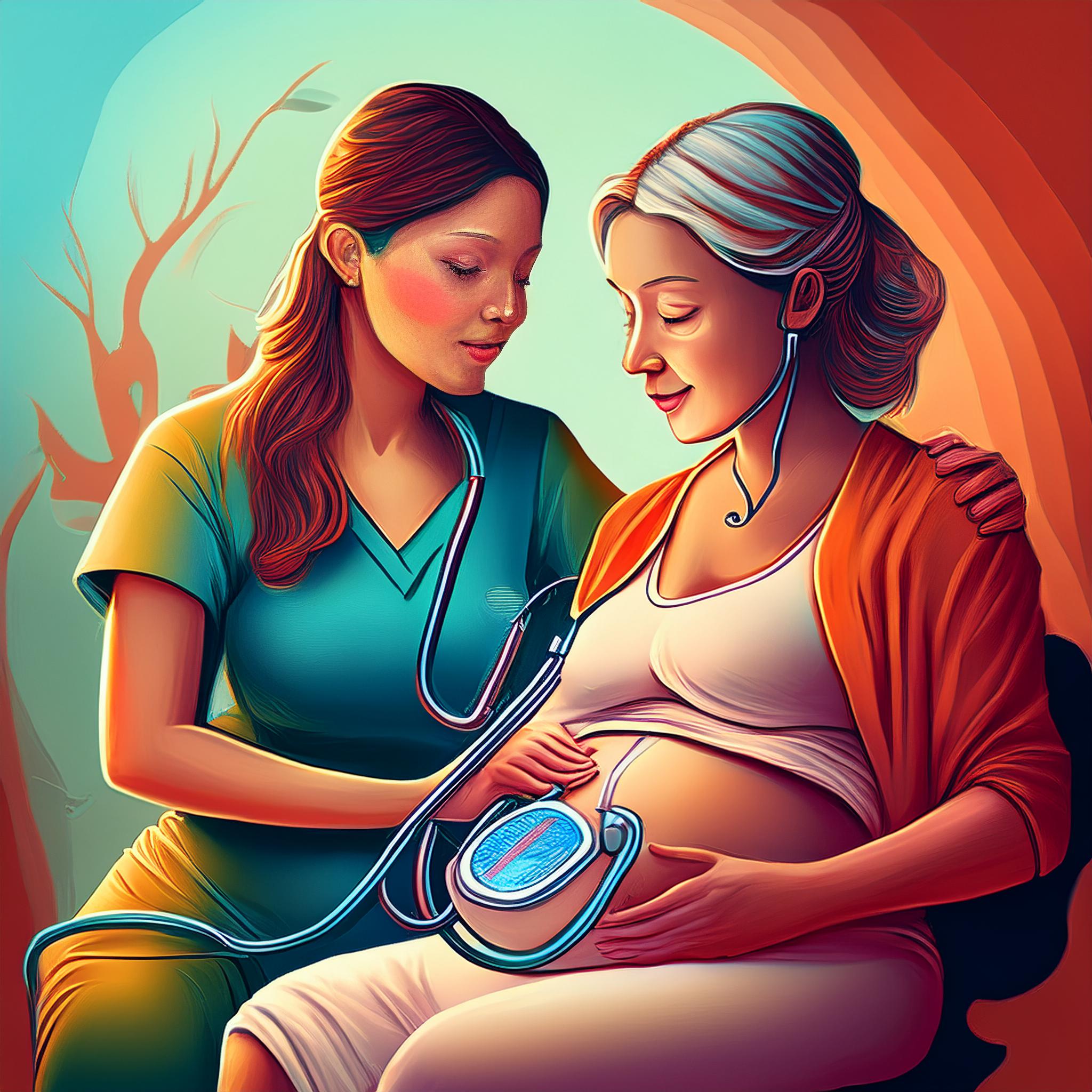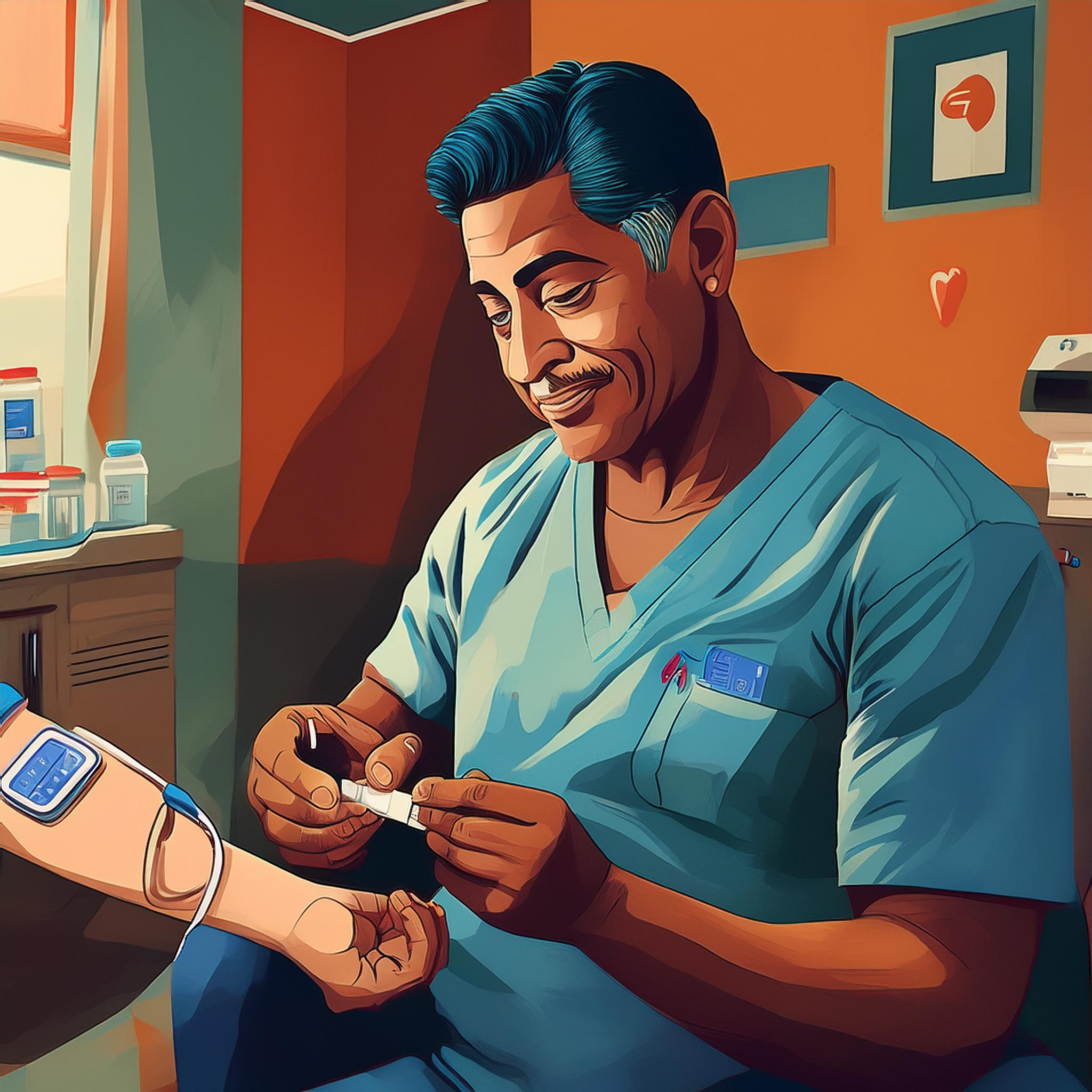The Effect of Exposure to Carbon Monoxide (Co) Gas in Pregnant Women on The Incident of Weight Infants Born in Makassar City
Downloads
Exposure to vehicle emissions, particularly carbon monoxide (CO), during pregnancy has been identified as a potential factor contributing to low birth weight in infants. CO's impact on the body involves binding with hemoglobin (Hb) in red blood cells, leading to placental dysfunction and alterations in oxygen flow efficiency to the uteroplacental. Such disruptions can adversely affect fetal growth. This study focuses on Makassar City, a rapidly developing urban area experiencing substantial growth in infrastructure and transportation. This research aims to assess the impact of carbon monoxide exposure on birth weight in pregnant women residing in Makassar City. The method of this study is a quantitative approach employing a descriptive cross-sectional design, which was adopted for this study. The research sample consisted of 120 pregnant women categorized based on their CO exposure levels—30 with low exposure, 60 with moderate exposure, and 30 with high exposure. Simple random sampling was utilized for participant selection. CO levels were measured using the Adalog 7000 multi-gas monitor. Data analysis included One Sample ANOVA and Linear Regression. The results show that data analysis indicated that pregnant women with low CO exposure had an average birth weight of 3110.83 grams. In contrast, those with moderate and high CO exposure exhibited average birth weights of 2840.33 grams and 2667.33 grams, respectively. The regression coefficient for CO exposure was -221,750, indicating that a 1 µm increase in carbon monoxide gas correlated with a decrease in birth weight by -221,750. The conclusion is that pregnant women who are exposed to high and moderate carbon monoxide gas during pregnancy had an effect on birth weight than mothers who are exposed to low carbon monoxide gas. Future research is needed to measure CO levels in the blood of pregnant women about birth weight.
Ahmed, M. J., Dogo, B., Baba, S. U., Muhammed, A. Y., & Abdulqadir, M. (2022). Assessment of concentration and spatial variation of air pollution in Zaria metropolis, Nigeria. Science World Journal, 17(2), 221-226. Retrieved from https://www.ajol.info/index.php/swj/article/view/231317
Aini, N., Ruktiari, R., Pratama, MR, & Buana, AF (2019). Sistem Prediksi Tingkat Pencemaran Polusi Udara dengan Algoritma Naïve Bayes pada Kota Makassar. Seminar Nasional Komunikasi dan Informatika, 3 , 83–90. Retrieved from https://jurnal.kominfo.go.id/index.php/snki/article/view/2567
Arsandi, A. S., Wahyu R, D., Ismiyati, I., & Hermawan, F. (2017). Dampak Pertumbuhan Penduduk Terhadap Infrastruktur Di Kota Semarang. Jurnal Karya Teknik Sipil, 6(4), 01-14. Retrieved from https://ejournal3.undip.ac.id/index.php/jkts/article/view/18189
Aubard, Y., & Magne, I. (2000). Carbon monoxide poisoning in pregnancy. BJOG : An International Journal of Obstetrics and Gynecology, 107 (7), 833–838. https://doi.org/10.1111/j.1471-0528.2000.tb11078.x
Bekesiene, S., & Meidute-Kavaliauskiene, I. (2022). Artificial Neural Networks for Modelling and Predicting Urban Air Pollutants: Case of Lithuania. Sustainability, 14(4), 2470. https://doi.org/10.3390/su14042470
Bleecker, M. L., & Lotti, M. (2015). Carbon monoxide intoxication. Handbook of clinical neurology, 131, 191-203. Elsevier B.V. https://doi.org/10.1016/B978-0-444-62627-1.00024-X
Cândido da Silva, AM, Moi, GP, Mattos, IE, & Hacon, S. de. (2014). Low birth weight at term and the presence of fine particulate matter and carbon monoxide in the Brazilian Amazon: a population-based retrospective cohort study. BMC Pregnancy and Childbirth , 14 (1), 309. https://doi.org/10.1186/1471-2393-14-309
Chelchowska, M., Ambroszkiewicz, J., Jablonka-Salach, K., Gajewska, J., Maciejewski, T.M., Bulska, E., Laskowska-Klita, T., & Leibschang, J. (2013). Tobacco smoke exposure during pregnancy increases maternal blood lead levels affecting neonate birth weight. Biological Trace Element Research , 155 (2), 169–175. https://doi.org/10.1007/s12011-013-9775-8
Chiarello, D. I., Ustáriz, J., Marín, R., Carrasco-Wong, I., Farías, M., Giordano, A., ... & Gutiérrez, J. (2023). Cellular mechanisms linking to outdoor and indoor air pollution damage during pregnancy. Frontiers in Endocrinology, 14, 280. https://doi.org/10.3389/fendo.2023.1084986
Culnan, D.M., Craft-Coffman, B., Bitz, G.H., Capek, K.D., Tu, Y., Lineaweaver, W.C., & Kuhlmann-Capek, M.J. (2018). Carbon Monoxide and Cyanide Poisoning in the Burned Pregnant Patient: An Indication for Hyperbaric Oxygen Therapy. Annals of Plastic Surgery , 80 (3 Suppl 2), S106–S112. https://doi.org/10.1097/SAP.0000000000001351
Czech, R., Zabochnicka-Świątek, M., & Świątek, M. K. (2020). Air pollution as a result of the development of motorization. Global NEST Journal, 22(2), 220-230.
Dadvand, P., Parker, J., Bell, M.L., Bonzini, M., & Brauer, M. (2013). Research | Children's Health Maternal Exposure to Particulate Air Pollution and Term Birth Weight: A Multi-Country Evaluation of Effect and Heterogeneity. Environmental Health Perspectives , 121 (3), 367–373. https://doi.org/10.1289/ehp.1205575
Dalefield, R. (2017). Smoke and other inhaled toxicants. Veterinary toxicology for Australia and New Zealand, 1st edn. Elsevier, 361-372. https://doi.org/10.1016/b978-0-12-420227-6.00019-0
Dey, S., & Dhal, G. C. (2019). Materials progress in the control of CO and CO2 emissions at ambient conditions: An overview. Materials Science for Energy Technologies , 2 (3), 607–623. https://doi.org/10.1016/j.mset.2019.06.004
Dong, X., Wang, Q., Peng, J., Wu, M., Pan, B., & Xing, B. (2018). Transfer of polycyclic aromatic hydrocarbons from mother to fetus in relation to pregnancy complications. The Science of the Total Environment, 636, 61–68. https://doi.org/10.1016/j.scitotenv.2018.04.274
Eftekhari, A., Won, Y., Morrison, G., & Ng, N. L. (2023). Chemistry of Indoor Air Pollution. American Chemical Society.
Friedman, P., Guo, X. M., Stiller, R. J., & Laifer, S. A. (2015). Carbon monoxide exposure during pregnancy. Obstetrical & Gynecological Survey, 70(11), 705-712. https://doi.org/10.1097/01.pec.0000526609.89886.37
Hapsari, D., Nainggolan, O., & Kusuma, D. (2020). Hotspots and Regional Variation in Smoking Prevalence Among 514 Districts in Indonesia: Analysis of Basic Health Research 2018. Global Journal of Health Science, 12 (10), 32. https://doi.org/10.5539/gjhs.v12n10p32
Kumar, A., Zhao, Y., Mohammadi, M. M., Liu, J., Thundat, T., & Swihart, M. T. (2022). Palladium Nanosheet-based dual gas sensors for sensitive room-temperature hydrogen and carbon monoxide detection. ACS sensors, 7(1), 225-234. https://doi.org/10.1021/acssensors.1c02015
McAllister, J., Kunsman, G. W., & Levine, B. S. (2020). Carbon monoxide/cyanide. Principles of Forensic Toxicology, 545-560. https://doi.org/10.1007/978-3-030-42917-1_30
Mitku, A.A., Zewotir, T., North, D., Jeena, P., Asharam, K., Muttoo, S., Tularam, H., & Naidoo, R.N. (2023). Impact of ambient air pollution exposure during pregnancy on adverse birth outcomes: generalized structural equation modeling approach. BMC Public Health , 23 (1), 45. https://doi.org/10.1186/s12889-022-14971-3
Mozzoni, P., Iodice, S., Persico, N., Ferrari, L., Pinelli, S., Corradi, M., Rossi, S., Miragoli, M., Bergamaschi, E., Bollati, V., Alinovi, R., Biggeri, A., Borghi, F., Cantone, L., Catelan, D., Cattaneo, A., Cavallo, D., Dioni, L., Dolo, V., … Vicenzi, M. (2022). Maternal air pollution exposure during the first trimester of pregnancy and markers of inflammation and endothelial dysfunction. Environmental Research, 212, 113216. https://doi.org/10.1016/j.envres.2022.113216
Nami-Ana, S. F., Nasresfahani, S., Tashkhourian, J., Shamsipur, M., Zargarpour, Z., & Sheikhi, M. H. (2021). Nanofibers of polyaniline and Cu (II)–l-aspartic acid for a room-temperature carbon monoxide gas sensor. ACS Applied Materials & Interfaces, 13(33), 39791-39805. https://doi.org/10.1021/acsami.1c07116
Rawat, S., Bamola, P., Dwivedi, C., & Sharma, H. (2021). Two dimensional MoS2 gas sensor to detect carbon monoxide (CO). Materials Today: Proceedings, 45, 4841-4843. https://doi.org/10.1016/j.matpr.2021.01.297
Rumchev, K., Spickett, J., Brown, H., Daube, M., & Bond, L. (2011). Environmental Tobacco Smoke and Health Risk Assessment. In Encyclopedia of Environmental Health (pp. 542–550). Elsevier Inc. https://doi.org/10.1016/B978-0-444-52272-6.00451-7
Salam, M.T., Millstein, J., Li, Y.F., Lurmann, F.W., Margolis, H.G., & Gilliland, F.D. (2005). Birth outcomes and prenatal exposure to ozone, carbon monoxide, and particulate matter: Results from the Children's Health Study. Environmental Health Perspectives , 113 (11), 1638–1644. https://doi.org/10.1289/ehp.8111
Septiawati, D., & Listianti, A. N. (2019). Exploring Indoor Air Pollution Exposure During Pregnancy and Risk of Low Birth Weight in Seberang Ulu 1, Palembang. Jurnal Ilmu Kesehatan Masyarakat, 10(2), 93-100. https://doi.org/10.26553/jikm.2019.10.2.93-100
Tang, V. T., Oanh, N. T. K., Rene, E. R., & Binh, T. N. (2020). Analysis of roadside air pollutant concentrations and potential health risk of exposure in Hanoi, Vietnam. Journal of Environmental Science and Health, Part A, 55(8), 975-988. https://doi.org/10.1080/10934529.2020.1763091
Zioła, N., Błaszczak, B., & Klejnowski, K. (2021). Long-term eBC measurements with the use of MAAP in the polluted urban atmosphere (Poland). Atmosphere, 12(7), 808. https://doi.org/10.3390/atmos12070808
Zubair, A., Samang, L., Selintung, M., & Usman, H. (2013). Studi Tingkat Pencemaran Udara Di Kota Makassar. National Seminar III in Civil Engineering, Muhammadiyah University of Surakarta , 2008 , 233–238.
Copyright (c) 2024 JURNAL INFO KESEHATAN

This work is licensed under a Creative Commons Attribution-NonCommercial-ShareAlike 4.0 International License.
Copyright notice
Ownership of copyright
The copyright in this website and the material on this website (including without limitation the text, computer code, artwork, photographs, images, music, audio material, video material and audio-visual material on this website) is owned by JURNAL INFO KESEHATAN and its licensors.
Copyright license
JURNAL INFO KESEHATAN grants to you a worldwide non-exclusive royalty-free revocable license to:
- view this website and the material on this website on a computer or mobile device via a web browser;
- copy and store this website and the material on this website in your web browser cache memory; and
- print pages from this website for your use.
- All articles published by JURNAL INFO KESEHATAN are licensed under the Creative Commons Attribution 4.0 International License. This permits anyone to copy, redistribute, remix, transmit and adapt the work provided the original work and source is appropriately cited.
JURNAL INFO KESEHATAN does not grant you any other rights in relation to this website or the material on this website. In other words, all other rights are reserved.
For the avoidance of doubt, you must not adapt, edit, change, transform, publish, republish, distribute, redistribute, broadcast, rebroadcast or show or play in public this website or the material on this website (in any form or media) without appropriately and conspicuously citing the original work and source or JURNAL INFO KESEHATAN prior written permission.
Permissions
You may request permission to use the copyright materials on this website by writing to jurnalinfokesehatan@gmail.com.
Enforcement of copyright
JURNAL INFO KESEHATAN takes the protection of its copyright very seriously.
If JURNAL INFO KESEHATAN discovers that you have used its copyright materials in contravention of the license above, JURNAL INFO KESEHATAN may bring legal proceedings against you seeking monetary damages and an injunction to stop you using those materials. You could also be ordered to pay legal costs.
If you become aware of any use of JURNAL INFO KESEHATAN copyright materials that contravenes or may contravene the license above, please report this by email to jurnalinfokesehatan@gmail.com
Infringing material
If you become aware of any material on the website that you believe infringes your or any other person's copyright, please report this by email to jurnalinfokesehatan@gmail.com.





























